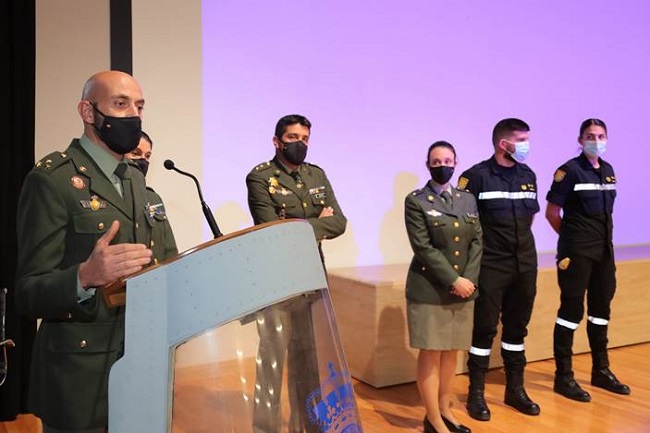Meu SciELO
Serviços Personalizados
Journal
Artigo
Indicadores
-
 Citado por SciELO
Citado por SciELO -
 Acessos
Acessos
Links relacionados
-
 Citado por Google
Citado por Google -
 Similares em
SciELO
Similares em
SciELO -
 Similares em Google
Similares em Google
Compartilhar
Sanidad Militar
versão impressa ISSN 1887-8571
Sanid. Mil. vol.78 spe Madrid 2022 Epub 06-Fev-2023
Workshop
Visit - Workshop
Chairs:
Colonel Med. María del Carmen Ybarra de Villavicencio. Spain
Colonel VET. Alberto Cique Moya. Spain
The agenda of the Congress was completed by a visit-workshop to the Torrejón Air Base (Madrid), where the congressmen had the opportunity to learn in situ the means of support for civil authorities and procedures for action in situations of health crisis.
The workshop consisted of a health care drill in the event of a biological incident.
The following units participated in its development:
– Deployment Support Medical Unit (UMAAD-Madrid). Air Force.
– Air Evacuation Medical Unit (UMAER). Air Force.
– Military Emergency Unit (UME).
Prior to the workshop, members of the participating units explained to the congressmen the tasks of their respective units, the organizational structure and capabilities, and an initial explanation of the workshop (figure 14).
A supposed patient was transferred under biosafety conditions from the health-post deployed by the UMAAD, where he received initial care, to the medicalized aircraft assisted by UMAER health personnel, proceeding with his strategic air evacuation (MEDEVAC). The aircraft used in the drill was a T-21 (C-295 Nurtanio) from ALA 35 in Getafe, adapted to transport infectious patients.
They after visited the treatment module deployed by the UMAAD, including a biological isolation module with an entrance lock, disinfection showers and the admission area where electromedicine equipment is available. The module works in negative pressure, the medical devices are handled from the outside, and the staff works equipped with positive pressure PPE, to achieve the health protection of the personnel and the containment of the infectious agent.
The Military Emergency Unit (UME) displayed two important facilities for emergency support: the Rapid Identification -Laboratory (LABIR) and the camp for the affected population (CDAM).
LABIR is a deployable facility that performs chemical and biological analyses of environmental samples. The equipment can change its conFiguretion depending on the incident, providing a great flexibility. The interior of the laboratory achieves level 3 biosafety conditions and has equipment that allows a confirmed identification of the agents, according to NATO regulations.
CDAM is a facility that provides lodging to people in the event of an emergency. It is made up of semi-permanent modules of -CEHAPOS (multipurpose habitable cells), stores and containers, which are deployed to provide complete care to the affected population (health, psychosocial, food, clothing, accommodation, information, rest, and family reunification) and is designed to achieve the highest levels of self-sufficiency, with an assembly time of around 48 hours and accommodation capacity for 500 people.
Medical staff from the University Hospital of Getafe, led by its Medical Director, joined the visit. This hospital maintains a close collaboration with the military units that participated in the workshop, which is why they showed great interest in attending its development.











 texto em
texto em 


